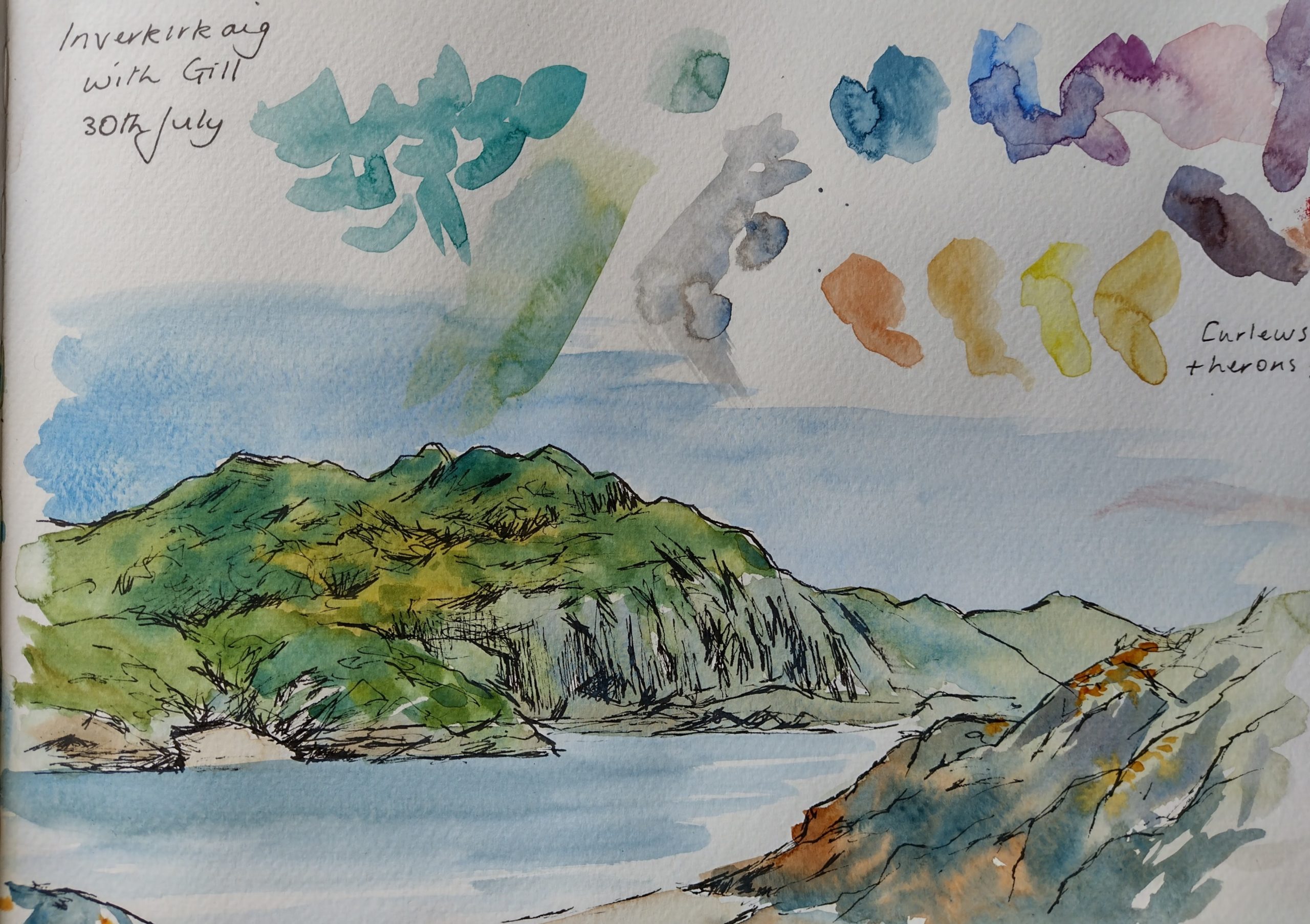There are few things I enjoy more than sitting in peaceful nature, in front of a beautiful view, in warm sunshine with my sketchpad out an a few spare hours to myself. One of those things is introducing a friend to the pleasures of watercolour, and teaching her the basics.
Looking at this page, it might at first appear a mess. What’s with all the splodges, and why is that sketch falling off the edge? Well, it is true I ran out of space for the beach. No matter, though. It was just a quick demo. And every time I look at that drawing I know the beach is there, right below the rocks.
I will remember lots of other things, too: the perfect weather and the spot we found, perched on the rocks. The fact we’d just had a swim, our skin still aglow. Those strange green marks were me showing her how I would represent the bushes in her painting. The line-up of yellows were when I was searching for her Burnt Sienna.
All Gill’s half-pans had come adrift in her metal box, and were jumbled up. This was her first ‘go’ with the colours I’d chosen for her, that she’d had since Christmas but not dared to try until now! She’d unwrapped them without noting what they were, and of course, several do look similar before they’re used. When I realised why she was quite unable, even with my instruction, to make a grey – because what we’d thought was Burnt Sienna turned out to be Alizarin Crimson and the mixture was just getting redder and redder – I had her reassemble the pans in a coherent manner and we painted a little chart, with the colour names underneath. This is something I usually begin with, every time I give someone a new watercolour set. It makes life so much simpler!
There are two morals to this story. The first is to know what colours you have in front of you. Take the time to place them securely in the order that makes sense to you, and experiment so that you understand what each of them does; how it interacts with the others, and what you’re likely to use it for. Everyone has their own preferences and people see colours differently. But as anyone who has been painting with me will recall, knowing where, and especially which, your Ultramarine and your Burnt Sienna are, is absolutely imperative, before we start anything! It’s a good idea to get into the habit of always keeping your colours in the same order. For instance, I have my yellows top left as I hold my palette, my blues bottom right. Yours might be the opposite way around but when you reach for them in a hurry, it should become instinctive.

The second is that every page in a sketchbook counts. Even if you think it’s a bit of a disaster. Even if it’s not your finest work, or it’s full of nothing but colour blobs and words. It might represent part of a learning curve. At the very least, it will be a precious memory. Here, I’ve written ‘curlews and herons’ as they were such a feature of the scene. The curlews had an added significance for Gill, and I shall remember that, also, whenever I see this page. I shall laugh at the patch of grey, top right, painted in desperation as I puzzled over our struggle.
Gill did a lovely painting that day but is bashful, so I won’t embarrass her by sharing it. I can guarantee, though, that whenever she looks at it she’ll remember our beautiful morning along with the sense of achievement at difficulties overcome. As well as the curlews.

